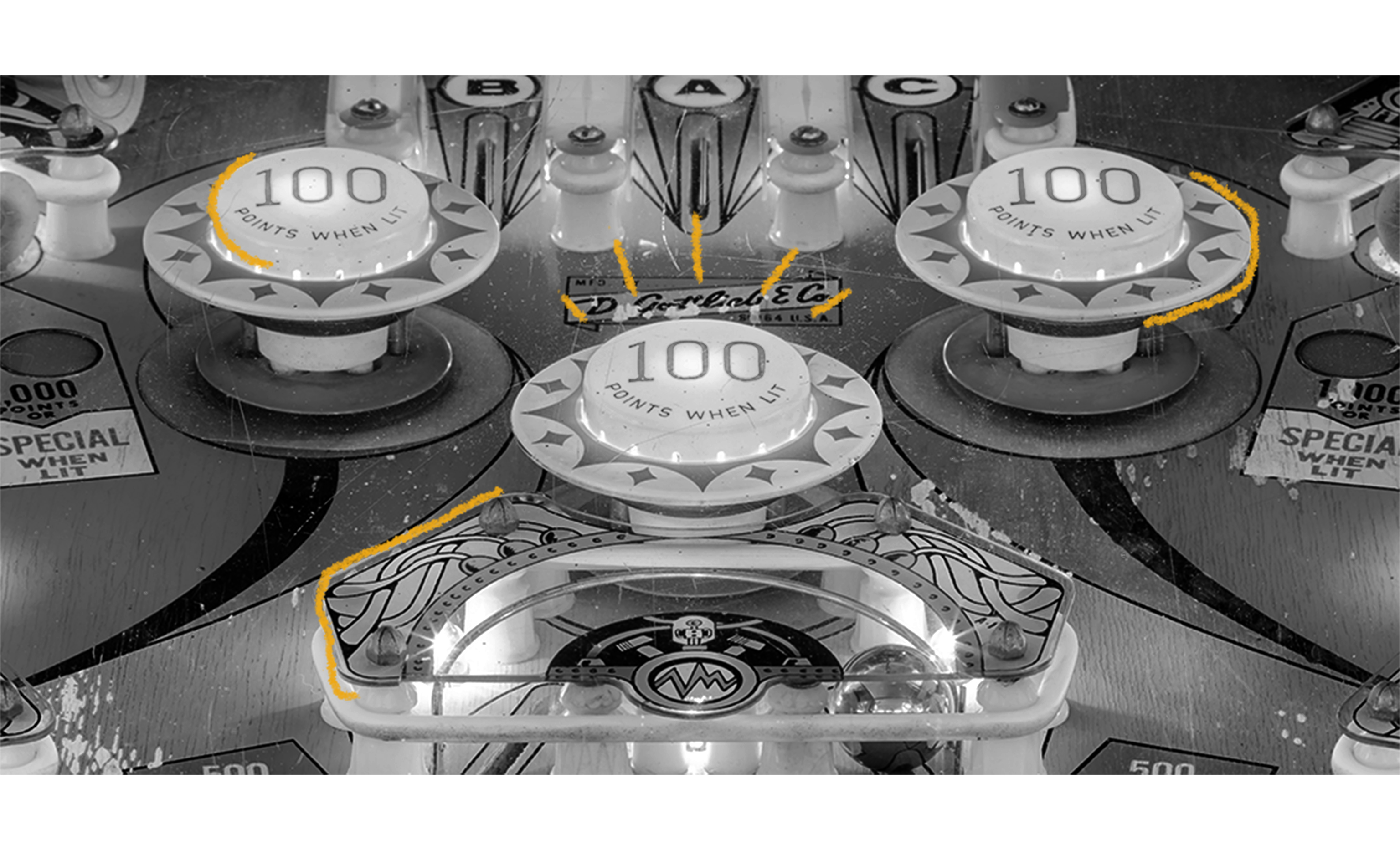Pinball has its roots in an 18th century French parlor game called bagatelle, which challenged players to use a stick to shoot balls across a table filled with pins and scoring holes. Coin-operated pinball machines originated in America in 1931. American manufacturers adapted the game from bagatelle but added a piece of glass between the player and the playing field, incorporated mechanical systems to remove balls after a player’s turn was finished, and added a coin mechanism to monetize the game. Arthur Paulin and Earl Froom’s 1931 Whiffle game, which was coin-operated, glass-covered, and recirculated its balls after play, also appears to have been an influence. However, it was David Gottlieb’s Baffle Ball game that truly ignited the pinball craze, which continued throughout the 1930s as people sought affordable distractions during the Great Depression. Throughout the 1930s and 1940s, pinball makers introduced a variety of new features, including vibrantly painted visuals, electrified scoring bumpers, chimes, and bells. Gottlieb’s 1947 game, Humpty Dumpty, added electromechanical flippers, giving players the ability to control, aim, and fire a pinball for the first time, transforming the game from one of chance to one of skill. (Previously, social reformers had considered it a game of chance and made pinball illegal in some parts of America.) By the end of the 20th century, pinball had acquired a complex set of rules and required a player to possess sharp hand-eye coordination skills for success. Today, pinball is less popular than it once was, but the game does still exist. Most modern pinball games are designed to dazzle with elaborate effects and many incorporate elements from popular franchises like Marvel or Star Trek.

Your go-to guide for weird history facts
Subscribe to the FREE daily email that makes learning about history fun.


